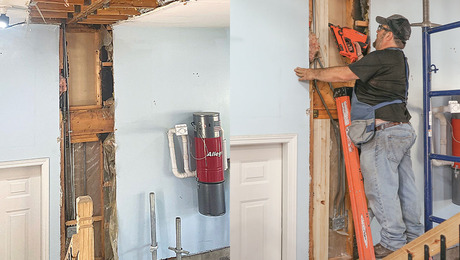Shoe Molding and Baseboards (Chicken or the Egg)
To me shoe molding on the baseboards looks like a cover up and it is better to install the base boards after the LVP or Engineered Flooring with no shoe molding. However I am from Colorado and and renovating a house in Alabama. I was told by my painter that it is very common (and preferred by painter) to install the baseboard before the LVP and install shoe molding or quarter round after. To me the painter still has to paint with flooring, they will just have to paint the shoe molding and not the entire baseboard. Anyone have an opinion on this? Also, is it ok to use 1×6 FJ Primed for base boards? Do people sand or router the edge or just let it go? The casings are all flat 1×4 and 1×6.















Replies
Your house, your choice. If you don't want the show molding then have the painter pre-paint the baseboard before it is installed then he/she will only have to fill the nail holes and touch up. Just sounds like the painter wants it easy for him/her. Baseboard edge shape your choice too.
Shoe mold vs no shoe mold seems to be a regional thing.
Thank you!
Shoe molding is a cover up more or less on purpose. I'd prefer to not have shoe molding in my home, but the floors are not 100% perfectly flat: Shoe covers the gaps. I believe that shoe is typically supposed to be nailed to the floor so that when things move, the gaps are not seen.
As far as FJ primed, routing an edge, etc., is personal/design preference, but the use of the material is fine. I used FJ primed for my own baseboard - routed the profile I wanted, then painted it. For painted baseboard, I prefer FJ primed to full/raw wood.
Shoe nailed to floor?
I shoot at a downward angle, but never directly to floor. Never heard of that in over 50 years on my knees.
Now here’s a question.
Oak floor.
Painted base.
Stained shoe?
Personally I think the shoe is part of the base and after looking at quite a few re-finish jobs, I still think it wrong to apply stained shoe.
Right you are. Shoe gets nailed to baseboard. If shoe is nailed to the floor, the floor will not be able to move (expand and contract) with changes in humidity/moisture content.
Thank you Calvin! I am using painted base. Primed FJ 1x6
I don’t recall where I heard or read that shoe should be nailed to the floor. For my oak floors, I nailed downward and at an angle steep enough where it likely went mostly into the floor. 18 ga brads to hold a shoe to the floor will not keep the floor or anything else from moving due to expansion and contraction, especially a pine or similar shoe and an oak floor. If there were substantial movement, I’d prefer to not see the gap.
Aesthetically, I 100% agree that shoe should be considered part of the base and painted or stained the same as the base, vs. matching the floor.
Edit: did a quick search and can find nothing to support my suggestion about nailing into the floor, and plenty of links saying to nail it into the baseboard.
1x material can be used as base moulding. However, if your casings are all the same material, you will have to join seams where casing legs and base moulding meet and unless you go ham sammy on the joint it will open up. I would use a backband moulding on door and window casings in these situations, so there's a nice positive reveal between the 2 materials. Also, its probably less expensive to get a pre-milled moulding, and definitely less labor. You can do a 1x base, with a milled base cap as well. As far as shoe, it seems to be tomato-tomoto, some people don't care, some people hate it. IF a houses floors are perfect, Id skip it.
Thank you! I am using the same 1x for case. I saw Spencer on Insider Carpentry do a rabbit at the but joint on the baseboard for this. Then the painter will caulk and paint joint. House floors are way out this is a renovation of a house in 1982 build with dimensional lumber.
In my experience, the decision to install shoe molding before or after the LVP or Engineered Flooring can vary depending on personal preference and regional practices. The advantage of installing shoe molding is that it covers any gaps between the baseboards and the flooring, providing a finished look.
If you prefer a cleaner aesthetic without the shoe molding, you can opt to install the baseboards after the flooring. As for using 1x6 FJ Primed for baseboards, it's a matter of choice.